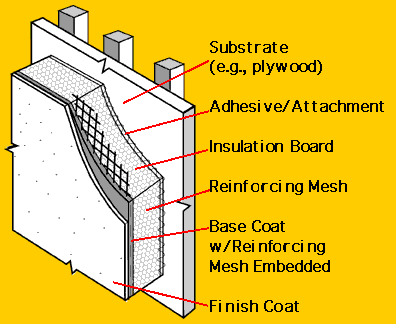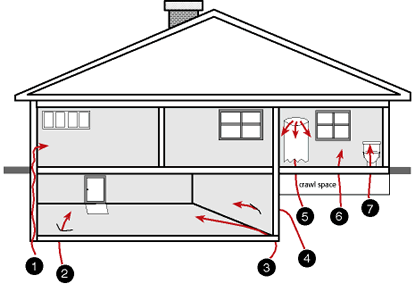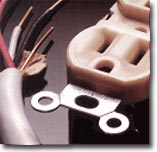Info
Sales Tips
To give your home a competitive edge when it's time to sell, make sure it is in good physical condition. This not only makes your home more attractive and desirable, it also simplifies the negotiation process when the time comes for the buyer's pre-purchase inspection.
According to home inspection experts, approximately half the resale homes in the market today have at least one significant defect. Routine maintenance is the best way to prevent major, costly problems from developing in the first place. If you have been putting off those repairs, now is the time to make them.
A Home Seller's Check List
Over the years, ASHI has identified a list of common problems that typically appear on buyer's home inspection reports. Early correction of these problems can increase a home's appeal and its selling price. It also sets the stage for a favorable home inspection report for the buyer, and thereby helps to expedite the sale.
After size, style, and location, a home buyer's primary concern is the condition of the home's basic structure and major mechanical systems. Most buyers do not want to invest a great deal of money correcting problems in such critical areas.
A pre-listing home inspection of the visible and accessible home components can reveal most of these problems, and include recommended repairs, if needed, on the following major items:
- Roof structure and covering.
- Foundation, basement, and/or crawl space.
- Central heating and air conditioning systems.
- Electrical system.
- Plumbing system.
A number of maintenance improvements are relatively easy and inexpensive to make, yet they can substantially improve a home's appearance, efficiency, and comfort. A professional home inspector may make helpful maintenance suggestions, such as:
- Trim trees and shrubs which touch or overhang the house.
- Apply new caulking and weather stripping as needed around windows and doors.
- Clean gutters of debris and leaves; repair or replace cracked or broken gutters, downspouts, and extensions to ensure proper drainage.
- Replace bathroom caulk or grouting where necessary to prevent seepage and improve appearance.
- Ventilate closed basements and crawl spaces, or install a dehumidifier, to prevent excessive moisture build-up.
- Regrade soil around the foundation, as needed to keep water away from the house.
- Replace dirty filters in the heating and air conditioning systems.
- Have the heating and air conditioning systems professionally serviced.
- Have chimneys professionally cleaned, and install chimney hoods or caps as needed.
Fixing even minor items can go a long way toward improving that important first impression of our home. Here are some typical improvements which might be suggested by the home inspector's findings:
- Repair leaky faucets.
- Tighten loose doorknobs.
- Replace damaged screens.
- Replace broken panes of glass.
- Replace burned-out light bulbs.
- Secure loose railings.
- Repair and coat driveway.
- Patch holes or cracks in walls and ceilings, then repaint.
- Repair peeling wallpaper.
Home inspectors also pay attention to items relating to protecting the home and its occupants from danger. They can alert you to important safety precautions which home buyers will appreciate, such as:
- Installing smoke detectors on each level and inside each bedroom.
- Installing Ground Fault Circuit Interrupters (GFCI's) in "wet" areas, such as kitchen counters tops, bathrooms, and exterior outlets.
- Keeping flammable products away from heaters, water heaters, and fireplaces.
- Installing Carbon Monoxide detectors on each level.
An attractive, clean, and neat home will appeal to a buyer's emotions. In addition to making repairs such as those listed above, remember to:
- Keep the lawn mowed and the house neat.
- Clean the exterior walls and trim; repaint if necessary.
- Open windows shades and curtains to create a bright, inviting atmosphere.
- Keep the kitchen and bathrooms clean, since buyers scrutinize these areas.
It's a good idea to assemble in advance various house records that can be used to answer questions from buyers and home inspectors. The Home Buyer Checklist identifies some of the important factors to consider when choosing a home. In addition to an affordable sales price, they will also want to be sure that the neighborhood and house meet the needs of their family.
FAQ
Call up and ask about their credentials and experience. If for some reason you don't feel comfortable asking this of the inspector when speaking with them on the phone then how will you feel asking questions at the inspection. You must feel that the inspector is qualified, experienced and attentive of your needs.
When choosing a home inspector, begin with a list of association members in your area. Then check to see who among these is the most experienced and has the most outstanding reputation for thoroughness as an inspector. And be sure to attend your inspection. That way, you'll learn as much as possible from your member inspector. Some have college degrees in fields related to construction such as engineering and architecture. A few have passed the same code certification examinations that the building code officials are required to pass.
A thorough Inspection covers everything from roof to the foundation.
Most Inspections take about three to four hours. These times may vary depending on the size, age & condition of the home.
We recommend that you be present at the site of the inspection, from start to finish.
The purchase of a new home is one of the single most costly investments that a family will make. Along with the extra stresses this will add, there is also the fear factor of, "Will This Home Stand The Test of Time?" It is also important to know what YOU, as the primary investor, are getting for your money. A home inspection is an excellent tool for you, the home buyer, to help determine not only the condition of the home, but to also help foresee any immediate unnecessary additional cost that may go unnoticed without the help of a home inspection. Home inspections are not a prediction of future performance, but can pinpoint existing problem areas.
This is the biggest mistake many potential new homeowners make when purchasing a home. Although the person you are considering may be very skilled, they are not trained or experienced at professional home inspections. Professional home inspection is a unique skill like no other. Professional inspectors get what we call an inspector's instinct for problems. That instinct takes extensive training and lots of experience doing inspections to develop. Many contractors, and other trades professionals hire a professional home inspector to inspect their homes when they make a purchase.
You can call us and discuss all the aspects of your new home whenever you like. Our service is a long-term investment.
Mold Information
Lorem ipsum dolor sit amet, consectetur adipiscing elit, sed do eiusmod tempor incididunt ut labore et dolore magna aliqua. Ut enim ad minim veniam, quis nostrud exercitation ullamco laboris nisi ut aliquip ex ea commodo consequat. Duis aute irure dolor in reprehenderit in voluptate velit esse cillum dolore eu fugiat nulla pariatur. Excepteur sint occaecat cupidatat non proident, sunt in culpa qui officia deserunt mollit anim id est laborum.
Lorem ipsum dolor sit amet, consectetur adipiscing elit, sed do eiusmod tempor incididunt ut labore et dolore magna aliqua. Ut enim ad minim veniam, quis nostrud exercitation ullamco laboris nisi ut aliquip ex ea commodo consequat. Duis aute irure dolor in reprehenderit in voluptate velit esse cillum dolore eu fugiat nulla pariatur. Excepteur sint occaecat cupidatat non proident, sunt in culpa qui officia deserunt mollit anim id est laborum.
Lorem ipsum dolor sit amet, consectetur adipiscing elit, sed do eiusmod tempor incididunt ut labore et dolore magna aliqua. Ut enim ad minim veniam, quis nostrud exercitation ullamco laboris nisi ut aliquip ex ea commodo consequat. Duis aute irure dolor in reprehenderit in voluptate velit esse cillum dolore eu fugiat nulla pariatur. Excepteur sint occaecat cupidatat non proident, sunt in culpa qui officia deserunt mollit anim id est laborum.
Lorem ipsum dolor sit amet, consectetur adipiscing elit, sed do eiusmod tempor incididunt ut labore et dolore magna aliqua. Ut enim ad minim veniam, quis nostrud exercitation ullamco laboris nisi ut aliquip ex ea commodo consequat. Duis aute irure dolor in reprehenderit in voluptate velit esse cillum dolore eu fugiat nulla pariatur. Excepteur sint occaecat cupidatat non proident, sunt in culpa qui officia deserunt mollit anim id est laborum.
EIFS
Exterior Insulation and Finish Systems (EIFS) are multi-layered exterior wall systems that are used on both commercial buildings and homes. EIFS were introduced in the U.S. almost 30 years ago and were first used on commercial buildings and then later on homes. EIFS typically consist of an insulation board made of polystyrene foam (which is secured to the exterior wall surface with an adhesive and/or mechanical attachments), a water-resistant base coat applied on top of the insulation and reinforced with fiberglass mesh, and a finish coat typically using acrylic co-polymer technology. This type of system is often referred to as artificial stucco.
The potential problem with EIFS is that moisture can get trapped behind the highly water resistant material with no way out. This can cause the framing to rot and foster the growth of mold between the exterior and interior walls. Damp and rotting wood is also a prime target for subterranean termites. It should be stated that the potential for these conditions exist with any type of exterior siding product be it brick veneer, wood, or vinyl siding. The potential for this condition with EIFS however can be exacerbated by its superior water resistance. Once moisture gets in, regardless of its origin, it usually has no escape.
The main locations where water tends to infiltrate into the framing structure of a building using an EIFS is around doors and windows, where the roof connects to the EIFS (roof flashing), and below extended exterior deck connections. Also, any moisture from within the home trying to find a path out will likely be thwarted by the EIFS.
The EIFS industry has been plagued by class action, and individual lawsuits (particularly in humid climates). The public's confidence in the products have been shaken to say the least. The lawsuits contend that the problem is with the nature of the product and the manufacturers contend that sloppy installation and poor maintenance are the culprits.
Regardless of who is "right", its clear that homes with EIFS require special scrutiny during inspection.

Radon
Lorem ipsum dolor sit amet, consectetur adipiscing elit, sed do eiusmod tempor incididunt ut labore et dolore magna aliqua. Ut enim ad minim veniam, quis nostrud exercitation ullamco laboris nisi ut aliquip ex ea commodo consequat. Duis aute irure dolor in reprehenderit in voluptate velit esse cillum dolore eu fugiat nulla pariatur. Excepteur sint occaecat cupidatat non proident, sunt in culpa qui officia deserunt mollit anim id est laborum.
Lorem ipsum dolor sit amet, consectetur adipiscing elit, sed do eiusmod tempor incididunt ut labore et dolore magna aliqua. Ut enim ad minim veniam, quis nostrud exercitation ullamco laboris nisi ut aliquip ex ea commodo consequat. Duis aute irure dolor in reprehenderit in voluptate velit esse cillum dolore eu fugiat nulla pariatur. Excepteur sint occaecat cupidatat non proident, sunt in culpa qui officia deserunt mollit anim id est laborum.
Lorem ipsum dolor sit amet, consectetur adipiscing elit, sed do eiusmod tempor incididunt ut labore et dolore magna aliqua. Ut enim ad minim veniam, quis nostrud exercitation ullamco laboris nisi ut aliquip ex ea commodo consequat. Duis aute irure dolor in reprehenderit in voluptate velit esse cillum dolore eu fugiat nulla pariatur. Excepteur sint occaecat cupidatat non proident, sunt in culpa qui officia deserunt mollit anim id est laborum.
Lorem ipsum dolor sit amet, consectetur adipiscing elit, sed do eiusmod tempor incididunt ut labore et dolore magna aliqua. Ut enim ad minim veniam, quis nostrud exercitation ullamco laboris nisi ut aliquip ex ea commodo consequat. Duis aute irure dolor in reprehenderit in voluptate velit esse cillum dolore eu fugiat nulla pariatur. Excepteur sint occaecat cupidatat non proident, sunt in culpa qui officia deserunt mollit anim id est laborum.

Potential Entry Points:
1. Cavities inside walls.
2. Cracks in solid floors.
3. Construction joints.
4. Cracks in walls.
5. The water supply.
6. Gaps in suspended floors.
7. Gaps around service pipes.
Polybutylene
Lorem ipsum dolor sit amet, consectetur adipiscing elit, sed do eiusmod tempor incididunt ut labore et dolore magna aliqua. Ut enim ad minim veniam, quis nostrud exercitation ullamco laboris nisi ut aliquip ex ea commodo consequat. Duis aute irure dolor in reprehenderit in voluptate velit esse cillum dolore eu fugiat nulla pariatur. Excepteur sint occaecat cupidatat non proident, sunt in culpa qui officia deserunt mollit anim id est laborum.
Lorem ipsum dolor sit amet, consectetur adipiscing elit, sed do eiusmod tempor incididunt ut labore et dolore magna aliqua. Ut enim ad minim veniam, quis nostrud exercitation ullamco laboris nisi ut aliquip ex ea commodo consequat. Duis aute irure dolor in reprehenderit in voluptate velit esse cillum dolore eu fugiat nulla pariatur. Excepteur sint occaecat cupidatat non proident, sunt in culpa qui officia deserunt mollit anim id est laborum.
Lorem ipsum dolor sit amet, consectetur adipiscing elit, sed do eiusmod tempor incididunt ut labore et dolore magna aliqua. Ut enim ad minim veniam, quis nostrud exercitation ullamco laboris nisi ut aliquip ex ea commodo consequat. Duis aute irure dolor in reprehenderit in voluptate velit esse cillum dolore eu fugiat nulla pariatur. Excepteur sint occaecat cupidatat non proident, sunt in culpa qui officia deserunt mollit anim id est laborum.
Aluminum Wiring
Due to implications in numerous house fires, the once common practice of using aluminum wiring during the 1970's is no longer permitted in new installations in most jurisdictions. If your house has aluminum wiring you do not necessarily need to panic. Aluminum wiring can be just as safe as copper wire as long as it has been installed correctly. The concern with aluminum wiring is that it is very unforgiving if it has been installed incorrectly.

Aluminum wiring expands when it warms up, and contracts then it cools down. Aluminum reacts differently than copper wire after several warm/cooling cycles. After each cycle aluminum tends to lose more of its tightness. This process is often referred to as "cold creep". Combined with aluminum's tendency to oxidize when in contact with certain metals, these factors can lead to dangerous problems. When aluminum oxidizes it heats up more to conduct the same amount of electricity, which then causes more oxidation. Due to this cycle, eventually the wires may start to get very hot, melt the fixture that it attached to, and even possibly cause a fire.
If you are considering purchasing a home with aluminum wiring, or have discovered it later, it would be a good idea to hire a licensed electrician or inspector to check over the wiring for any potential problems.
